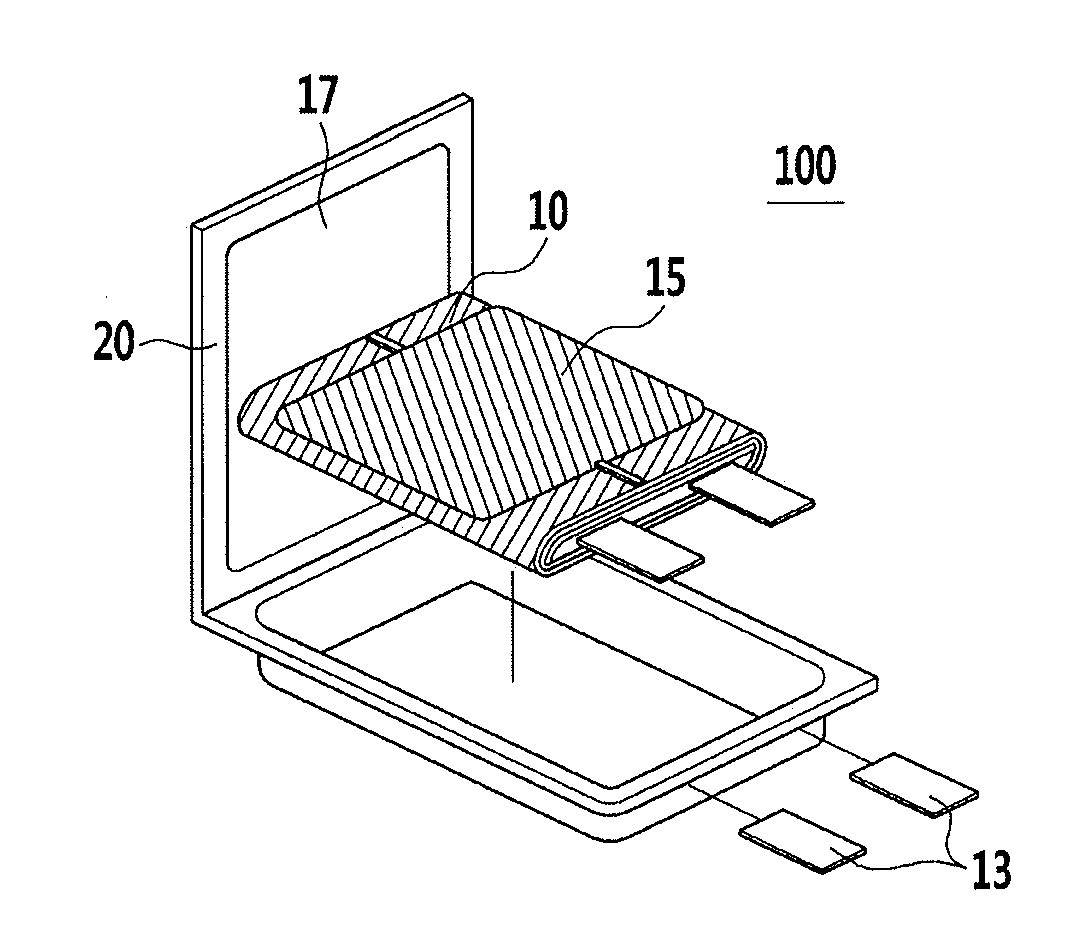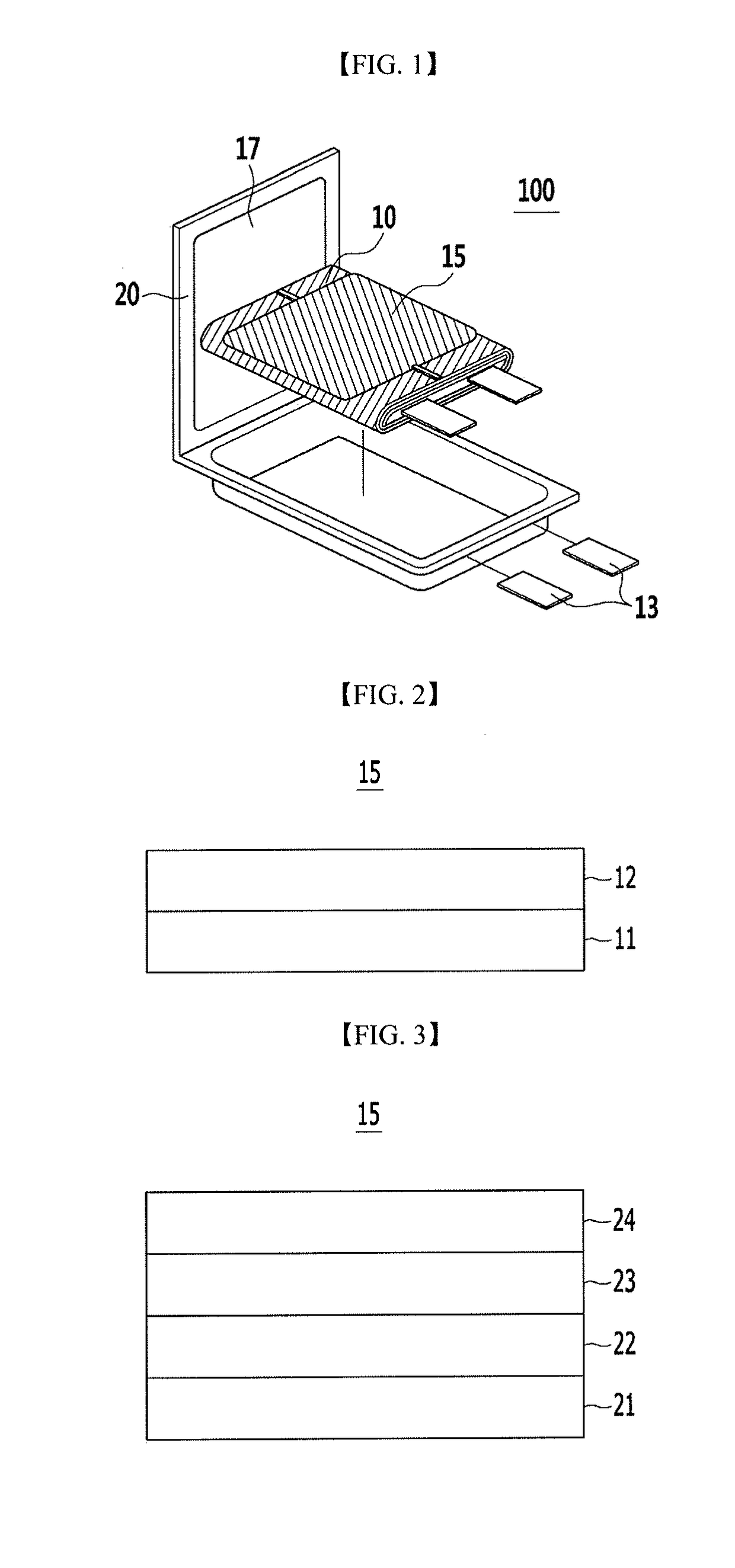Rechargeable lithium battery
- Summary
- Abstract
- Description
- Claims
- Application Information
AI Technical Summary
Benefits of technology
Problems solved by technology
Method used
Image
Examples
example 1
[0080]A positive active material layer composition was prepared by mixing LiCoO2, polyvinylidene fluoride (PVDF), and carbon black in a weight ratio of 97:1.5:1.5 and dispersing the mixture in N-methyl-2-pyrrolidone. The positive active material layer composition was coated on a 12 μm-thick aluminum foil and then, dried and compressed to manufacture a positive electrode.
[0081]A negative active material layer composition was prepared by mixing graphite and styrene-butadiene rubber in a weight ratio of 98:2 and dispersing the mixture in water. The negative active material layer composition was coated on a 8 μm-thick copper foil and then, dried and compressed to manufacture a negative electrode.
[0082]An electrolyte solution was prepared by mixing ethylene carbonate (EC), propylene carbonate (PC), EMC, and DEC in a ratio of 25:5:40:30 and dissolving LiPF6 in a concentration of 1.3 M in the mixed solvent.
[0083]The positive and negative electrodes were wound with a polyethylene separator ...
example 2
[0086]A rechargeable lithium battery cell was manufactured according to the same method as Example 1, except for using a four-layered tape instead of the double-layered tape. The four-layered tape included a 5 μm-thick first adhesion layer formed of acryl-based rubber, a 7 μm-thick base layer formed of polyethylene terephthalate (PET) on the first adhesion layer, a 5 μm-thick second adhesion layer formed of acryl-based rubber on the base layer, and a 20 μm-thick heat-bonding layer formed of casted polypropylene on the second adhesion layer.
example 3
[0087]A rechargeable lithium battery cell was manufactured according to the same method as Example 1, except for using tape including a 5 μm-thick adhesion layer formed of acryl-based rubber and a 50 μm-thick heat-bonding layer formed of a hot-melt having a melting point of 65° C.-75° C. (Tapex Pty. Ltd.). The electrode assembly was finished with the double-layered tape was housed in a pouch case, and then the pouch case was sealed after inserting the electrolyte solution thereinto and heat-pressed at 65° C. under 100 kgf for about 3 seconds to make a rechargeable lithium battery cell.
PUM
 Login to View More
Login to View More Abstract
Description
Claims
Application Information
 Login to View More
Login to View More - R&D
- Intellectual Property
- Life Sciences
- Materials
- Tech Scout
- Unparalleled Data Quality
- Higher Quality Content
- 60% Fewer Hallucinations
Browse by: Latest US Patents, China's latest patents, Technical Efficacy Thesaurus, Application Domain, Technology Topic, Popular Technical Reports.
© 2025 PatSnap. All rights reserved.Legal|Privacy policy|Modern Slavery Act Transparency Statement|Sitemap|About US| Contact US: help@patsnap.com



